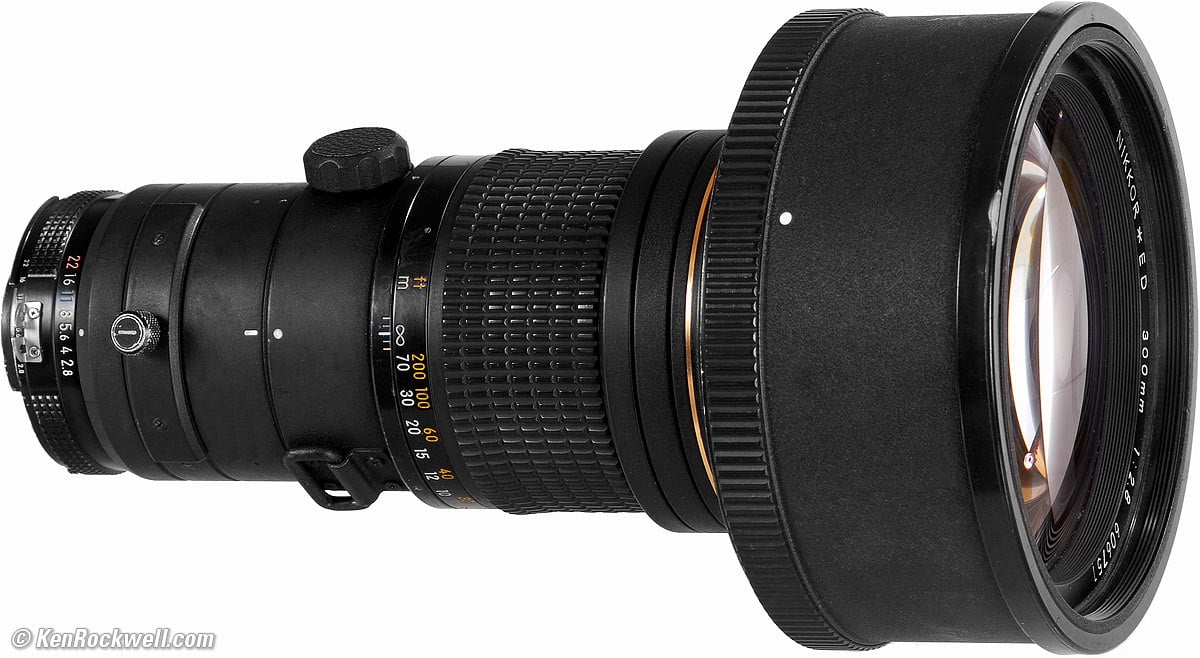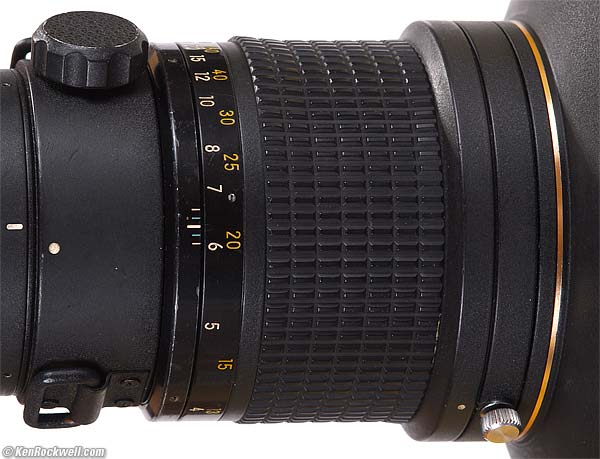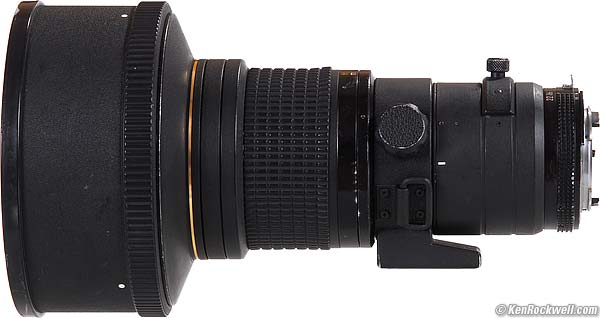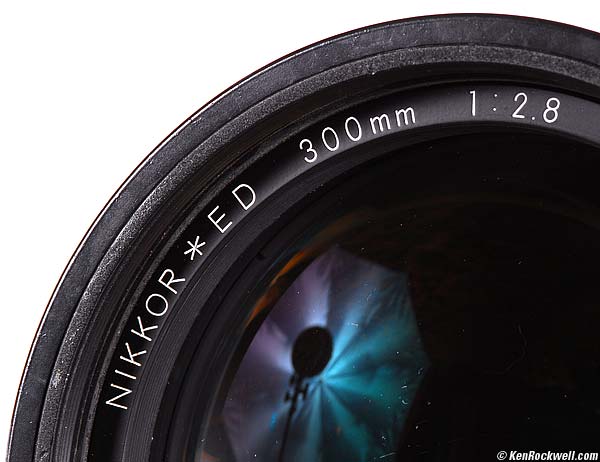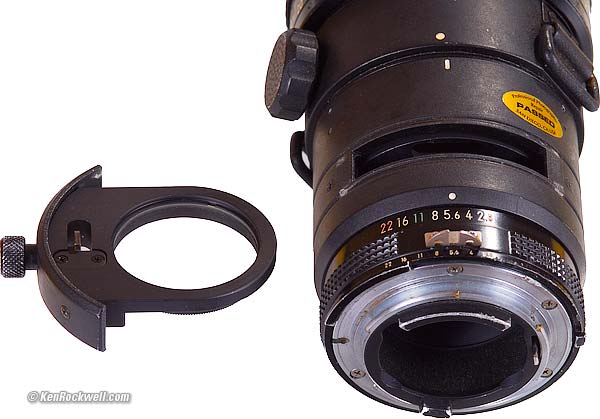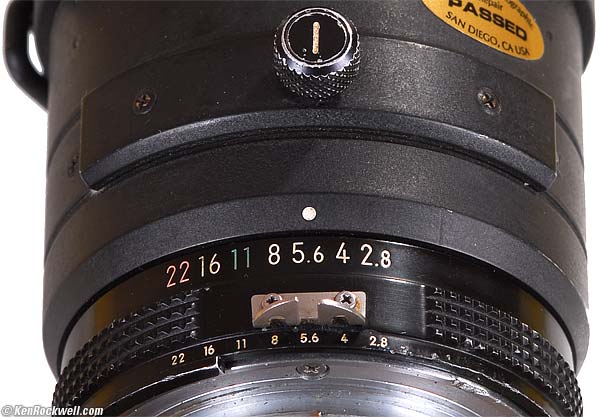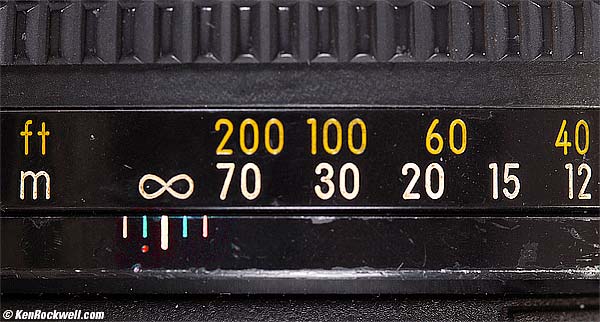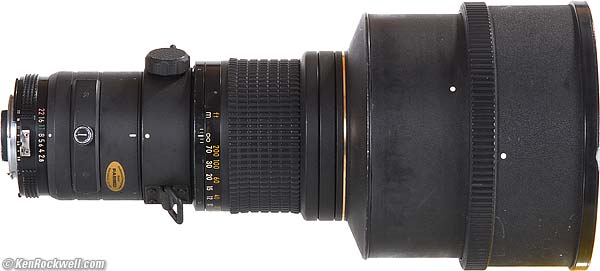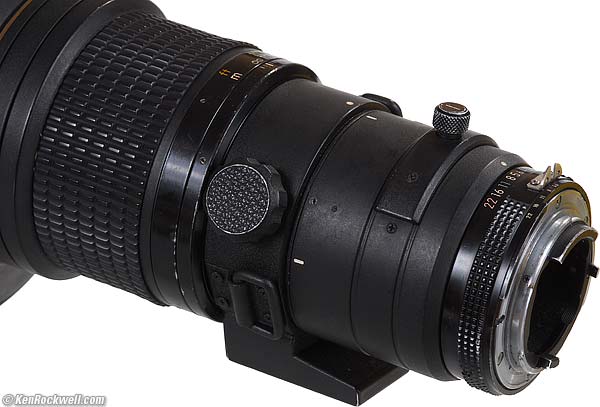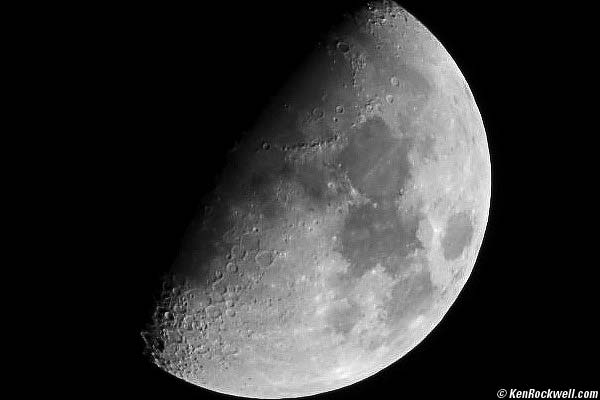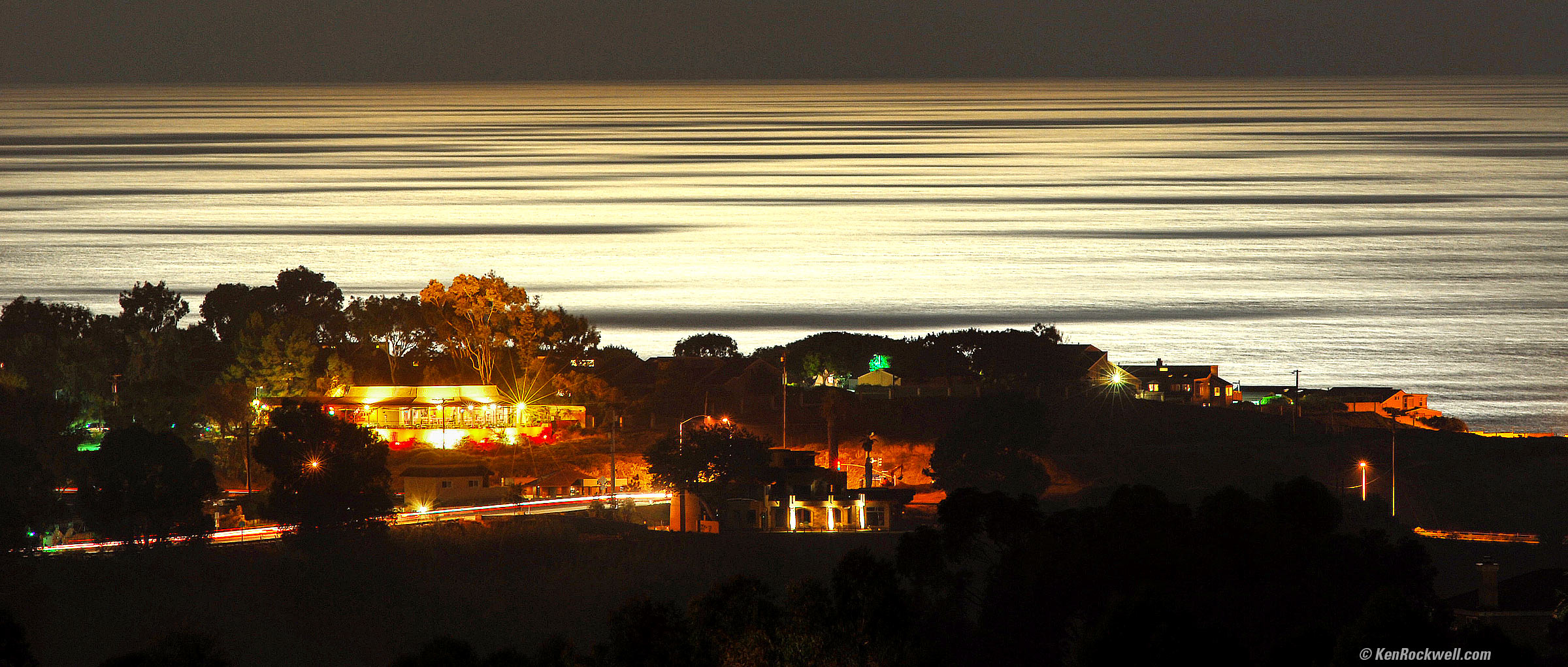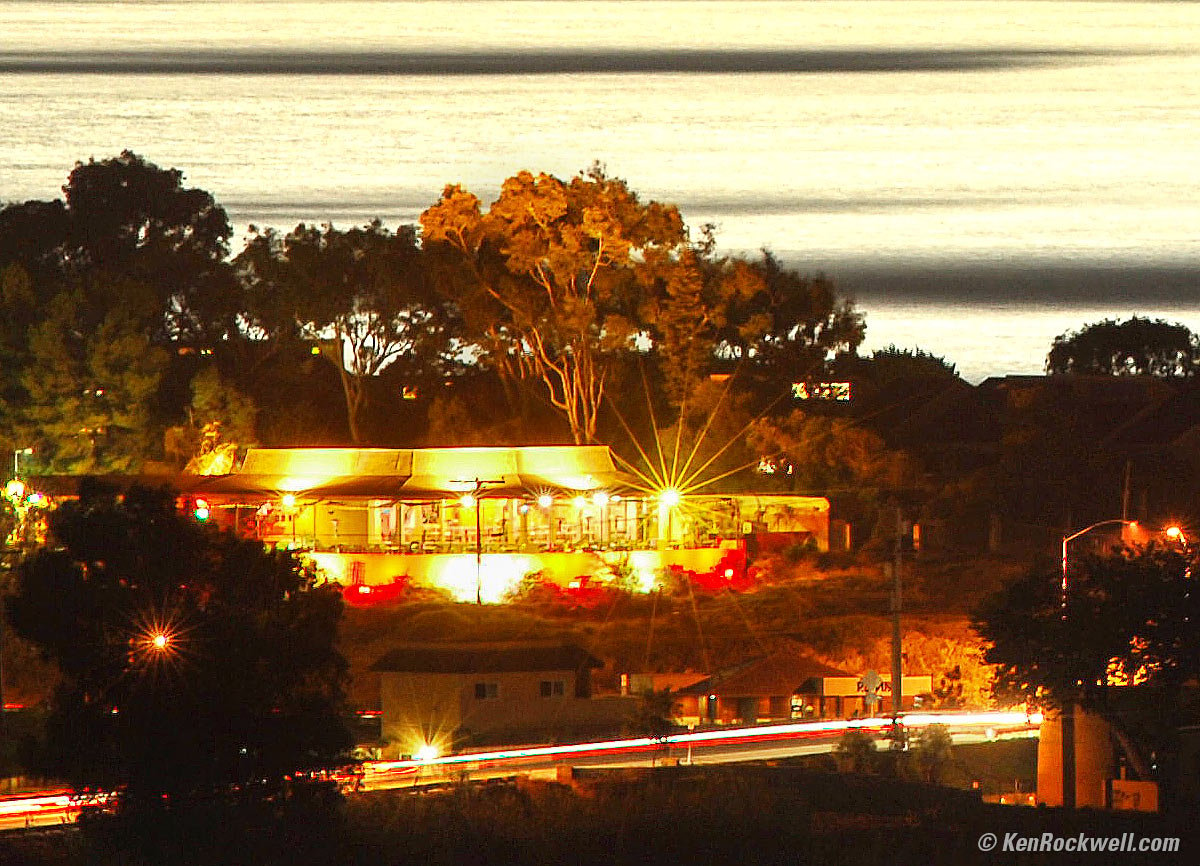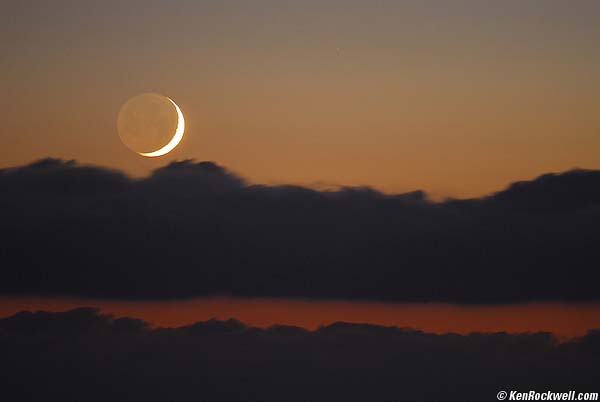Nikon 300mm f/2.8 ED-IF
AI and AI-s (1977~2005)
Nikon NIKKOR✱ED 300mm f/2.8 AI (FX, DX and 35mm coverage, 122mm, 39mm drop-in or gel filters, 86 oz./2,450g, 13'/4 m close focus, about $450~$1,200 used). enlarge. I'd get it at this link directly to them at eBay (see How to Win at eBay).
This all-content, junk-free website's biggest source of support is when you use those or any of these links to approved sources when you get anything, regardless of the country in which you live. Buy only from the approved sources I use myself for the best prices, service, return policies and selection. Thanks for helping me help you! Ken.
2:22 PM, 22 February 2022 Better Pictures Nikon Reviews Nikon Lenses Nikon Manual-Focus Lenses All Reviews
Top Specs Performance Recommendations
|
I buy only from these approved sources. I can't vouch for ads below. |
The Nikon 300mm f/2.8 ED-IF was the world's first practical super-speed super telephoto.
The Nikon 300mm f/2.8 ED-IF was a landmark when it was introduced in November 1977, along with Nikon's first automatic-indexing lenses (AI). These new AI lenses, which today still work perfectly on most film and digital Nikons like the newest D300, D3, F100 and F6, were the first to allow mounting on a camera without having to fiddle with the aperture ring to index it to the the meter. (More at AI Lenses.)
The 300mm f/2.8 ED-IF is what put "ED" into photography's lexicon. This ED, or super-low dispersion glass, is what allowed Nikon to create what previously was impossible, which was a fast super telephoto without sharpness-robbing chromatic aberration. Previously, secondary chromatic aberration (green/magenta color fringes on the sides and and halos in the center) would have been too much of a problem with traditional lenses. (More at ED Glass.)
IF, or internal focusing, means that you may focus simply by flicking the focus ring back and forth. The entire lens doesn't have to rack in and out. in fact, nothing moves externally. (More at Internal Focusing.)
Nikon was the first in recent times to use a colored ring to say that a lens was special. The ED lenses of this era used solid gold metal rings (not just foil) to say "look at me, I'm the King of Lenses!" Considering the prices of these lenses, the cost of the solid gold didn't add much to the price. ED actually means the special glass that's used. Contrast this to Canon's lame red paint for Canon's L lenses.
The golden ring means ED glass.
Focus Click-Stop
The thumb screw on the lower right in the photo above is a focus index. You can set it to put a click-stop at any focus distance. You would do this when shooting wild animals or sports and want to recall a precise focus point instantly by feel. You'd typically set this this for home base or a popular bear hangout.
Hold the focus ring and rotate the small ring until it clicks. Let go of the small ring and focus on your spot. (The small and large rings are now clicked together.) Snug down the screw. Now you have a click stop at that point, and can focus anywhere else, too, by moving off the click stop.
I don't use this, so I rotate it someplace out of my 300mm's focusing range and snug it down.
History and Perspective
This ED-IF version sold for $1,500 when it was introduced in 1977. $1,500 in 1977 was the same as $5,200 in 2007.
Of course I wanted one back then, but was only in high school. I might have been able to buy one in 1983 when I bought my first Nikon F2AS and was in college, but I was too cheap. They still sold for about $1,500 in 1983, new.
If I wasn't so cheap, the Yen vs. Dollar was advantageous back then, and these lenses sold $3,000, used, around 1990 as the exchange rate changed. It sold new for $2,900 in New York in December 1993, and $3,600 in December 1996. If I hadn't been so cheap and had bought a new one when I could have in the 1980s, I would have gotten a better return than all my other financial investments and could have been enjoying the lens for years instead of having useless paper investments.
See History of the Nikon 300mm f/2.8 to put this lens into perspective with all Nikon's other 300mm f/2.8 lenses.
Nikon 300mm f/2.8 ED-IF with hood retracted. Note tripod collar.
Top Introduction Performance Recommendations
Nikon 300mm f/2.8 engraved markings.
These markings are engraved and filled. The serial number continues clockwise, and it says "Nikon" 180 degrees away. The engraved marking on the glass itself come from decades of hard professional use.
Name
Nikon calls this the Nikon Nikkor * ED 300mm f/2.8 IF.
Focal Length
300mm.
Used on a DX camera it gives an angle of view similar to what a 453mm lens would give on a 35mm film or FX camera. See also Crop Factor.
Optics
8 elements in 6 groups.
Internal focusing (IF), ED glass.
Diaphragm
Classic 9 straight blades.
Stops down to f/22.
39mm Filter Holder, which goes into slot just ahead of aperture ring.
Filters
122mm front screw-in.
39mm rear drop-in with holder above.
Second rear gelatin filter holder included.
Either the gelatin or 39mm holder must be in all the time, otherwise you have a big hole in the lens tube.
The Nikon part number for the 39mm NC clear filter (only) is 2478NASI and the part number for a 122mm L37c filter is 2440.
Filter holder inserted for normal operation. Turn the knob to change it.
Close Focus
13 feet (4m) from the image plane (the back of the camera), marked.
Infrared Focus Index
Yes.
Nikon 300mm f/2.8 ED-ID Depth-of-Field Scale and IR Index.
The pair of blue and pink lines are the depth of field marks, color-coded to f/11 and f/22 on the aperture ring. The red dot is the Infra-red focusing index. When shooting in IR, focus, then move the focus ring manually to the left so whatever was at the central white index is now at the red dot.
Infinity Focus Stop
None.
The 300mm f/2.8 ED-IF will focus past infinity. At normal temperatures infinity is focused as shown above. At temperature extremes you will need to focus slightly differently, which is why the focus ring turns past infinity.
My beater sample has been adjusted by an incompetent, because the real infinity focus is when my lens is focused past infinity to the stop. This is handy since I don't work in temperature extremes and makes infinity focus happen at the stop, but it's not right.
Hood
Integrated retractable hood with rubber bumper and lock.
Nikon 300mm f/2.8 ED-IF with integral hood extended. Note strap lugs.
Strap Lugs on Lens Barrel
Yes.
Use these to hold it around your neck, not a camera strap.
Case
Included, fake leather.
The case has a special little compartment in the top cover for the gel filter holder. No one ever used the gel holder, so most lenses still have the unused gel holder hiding in the case. My case has almost evaporated from use, but still has a new gel holder carefully preserved inside it.
Front Cap
A black sock. My lens had long since lost it, since pros don't bother with lens caps. The pros who used my lens jammed it in its case when they were done with it each day. Nikon's $1,500 lenses, like my 14mm f/2.8 AF and the 300mm f/4 AF, use fake leather (vinyl). Nikon's $10,000 lenses like my 400mm f/2.8 use real leather. I'm unsure what this lens originally had. Seeing how revolutionary it was, I'm sure it came with a real leather cap. These leather caps are artwork in themselves.
Tripod Collar
Yes, rotating with excellent damping and locking.
It's not removable.
Rotating Tripod Collar.
Size
5.41" diameter, 9.45" extension from flange (137.4 x 240mm) with hood retracted.
11.30" (287mm) extension from flange with hood extended. (measured figures.)
Weight
5 pounds, 6 ounces (86 oz. or 2,450 g), measured.
Versions and Serial Number Ranges
See also Nikon 300.2.8 Versions and History.
AI version seen here (13'/3m close-focus, 122/39mm filters and built-in hood): 605,000 (1977) to 608,000 (1982). Nikon made about 2,600 of these.
AI-s version not seen here (same as AI version: 13'/3m close-focus, 122/39mm filters and built-in hood): 609,000 (1982) to 615,000 (1985). Nikon make about 6,000 of these.
Newer AI-s version with same optics not seen here (focus now to 10'/3m, front cover glass plate and only takes 39mm filters): 620,000 (1986) to 628,000 (2005). Nikon made about 8,000 of these.
Introduced
November 1977.
Sold through 1982 as shown here, later in other cosmetic versions. (see 300mm f/2.8 history.)
Price
February 2022
About $450~$1,200 used if you know How to Win at eBay.
May 2019
About $600~$1,700 used if you know How to Win at eBay.
June 2015
About $600~$1,200 used if you know How to Win at eBay.
Top Introduction Specs Recommendations
Bokeh
Bokeh is lovely. Not only are backgrounds way out of focus at f/2.8, the blur circles have soft edges. This is one of the reasons the 300mm f/2.8 has been a favorite pro portrait lens ever since 1977.
Like Nikon's shorter fast teles, like the 85/1.4 AI-s and 135mm f/2 DC and AI-s, highlights behind the point of focus can have greenish fringes around them, and highlights in front of the subject can have magenta halos around them. You shouldn't have anything in front of the subject out of focus, and since backgrounds are often green for portraits, this only improves the bokeh by softening the edges of out of focus objects. This color effect is at f/2.8; it goes away by f/4.
Ease of focusing
Excellent. Just flick the ring with a finger. The fast f/2.8 speed allows easy manual focusing on any manual or autofocus camera. Use the focus confirmation dots on digital cameras, even on the D40.
I need to try it some more and it's probably my goof, but it seems like it might be focusing a tiny bit beyond my intended subject using the electronic assist lights in my F6.
Metering
Couples to every film camera made from 1959 through today. Matrix metering on F4 and FA. Color Matrix metering on D700, F6, D2X, D200, D300 and D3 if you enter the focal length and f/stop. No metering on cheap digitals like the D40 and D80 (use trial-and-error). Center-weighted metering on F100 and D1X.
Distortion
None at infinity
Some pincushion at 25 feet, corrects with -1.2 in Photoshop CS2's lens distortion filter.
Ghosts
None that I can see.
Flare
I've had no problems shooting towards the sun.
Lateral Color Fringes
None on a D3.
Sharpness
Sharpness is excellent, even at f/2.8. The biggest limitations to sharpness with any fast super telephoto like the Nikon 300mm f/2.8 are the abilities of the photographer and atmospheric conditions.
The Moon. Crop from 100% image on my D200, ISO 100, 1/60 at f/5.6.
Of course the moon is only a small part of the frame and this image is a crop from it. If I showed the full image it would be 38" (1m) across. Of course the rest of this image is black, but you can get an idea of the sharpness of the 300mm f/2.8. I did some post sharpening.
At f/2.8 the biggest limitation to sharpness is the very narrow depth of field and one's ability to focus accurately. Digital cameras have poor manual focusing precision with their single-dot focus indicators. Much better focusing precision can be had with a film camera with either the traditional split image and microprism, or an AF film camera with a three-light focus assist. For instance, the F6, F100 and F4 have a very precise dot and two side arrows to ensure pinpoint focus. AF cameras, with only one focus dot, get you close, but not always perfect.
At smaller apertures, which mean longer shutter speeds, camera and subject motion are the biggest limitations to sharpness.
At every aperture, there is enough magnification that thermal currents (heat waves) in the atmosphere will rob sharpness for reasonably distant subjects in many daytime conditions. Even if you see no shimmering, pick up your binoculars, and if you see shimmering, that will be the limit to your sharpness.
Moonlight on the waters of South Ponto, 10:34 PM, 21 August 2007. Nikon D200, 30 seconds at f/5.6 at ISO 100 (LV 0.0). bigger.
Image Stabilization (VR) performance top
This lens has no internal optical stabilization, however it works with internal sensor-shift Image Stabilization (IS or VR (Vibration Reduction)) in some of Nikon's mirrorless Z cameras with the FTZ adapter.
"Percent Perfectly Sharp Shots" are the percentage of frames with 100% perfect tripod-equivalent sharpness I get when I'm shooting hand-held while free-standing with no support or bracing. This is a very strict test; in actual shooting at typical print sizes I get acceptable sharpness at much slower speeds, but for the purposes of seeing how much improvement an IS system gives, this is the most precise method.
Hand tremor is a random occurrence, so at marginal speeds some frames will be perfectly sharp while others will be in various stages of blur — all at the same shutter speed. This rates what percentage of shots are perfectly sharp, not how sharp are all the frames:
| % Perfectly Sharp Shots on Z9 on FTZ | 1/2 |
1/4 |
1/8 |
1/15 |
1/30 |
1/60 |
1/125 |
1/250 |
1/500 |
| Stabilization ON | 0 |
0 |
17 |
0 |
75 |
100 |
100 |
100 |
100 |
| Stabilization OFF | 0 |
0 |
0 |
0 |
0 |
17 |
100 |
100 |
100 |
I see about a two stop real-world improvement.
Sunstars
The classic 9-bladed diaphragm leads to brilliant 18-pointed stars on bright points of light when stopped down. This is one of the reasons I love my Nikon teles over Canon's lame 8-bladed diaphragms. Canons only give hokey 8-pointed stars.
Here's a crop showing the street lamp to the left of the first image. See the 18-pointed star? Cool, huh? This is at f/5.6! Stop down further and these become progressively more pronounced.
1,200-pixel-wide (3.2x) crop from above D200 image: a restaurant over a mile away.
Moonset and Earthglow, 13 October 2007. D200, f/2.8 at 6 seconds, ISO 400, as shot in JPG.
Everyone loves the 300mm f/2.8.
300mm is long enough for almost anything, and f/2.8 is fast enough for almost anything. The shot above is an example. Six seconds was the verge of getting motion blur from the moon. A $25,000 300mm f/2 would have let me use a shorter exposure, but for a savings of $24,600 this is great. A slower aperture would have forced a grainier ISO, and a shorter lens would have lost the whole point of this image.
Resistance to Professional Abuse
My sample is a beater, retired after having been handed down from three newspaper, sports and surfing photographers. It has fungus on the rear element and scratches on the front. See the crud on the lens above where I showed the engravings? The mount is chewed up and the rubber is peeling off the focus ring.
This lens was at the Jimmy Paige/Robert Plant world tour in 1995 and still has the photo pass on what little is left of the case.
Guess what? This 300mm f/2.8 still works perfectly. I see no image degradation from any of this.
Use with the Nikon TC-16A Autofocusing Teleconverter
The mysterious Nikon TC-16A autofocusing teleconverter multiplies aperture and focal length by 1.6x, which makes this into a 480mm f/4.5. I'll call this a 500mm f/4.5 for convenience.
The crazy part is that this converter has AF optics inside it, so when used on some AF cameras, will autofocus a manual-focus lens! That's why it is called an "autofocusing teleconverter!"
The TC-16A really does turn this old beater manual focus 300mm f/2.8 into an autofocusing 500mm f/4.5. This combination works great on my new F6, the F4s and the N2020. It doesn't autofocus on the D200. It doesn't work on the Nikon D3, and does with the Nikon N90s.
Wide open (T4.5 or f/2.8 on the aperture ring) this combination gives some slight light falloff wide-open, on film. Stopped down to T13 (f/8 on the aperture ring), for example, there is no light falloff, even on film.
Top Introduction Specs Performance
If you can find one as cheap as I did ($400), get it for landscape work.
For sports and action, get a 300mm f/2.8 AFS or VR 300mm lens instead. I don't know about you, but I'm not good enough at manual focus to track anything.
The 300mm f/4 AFS lens costs 1/5 of the f/2.8. If budget is an issue, get the f/4.
See Nikon 300mm f/2.8 history for far more suggestions about which versions of the f/2.8 are best for what. Nikon has made 300mm f/2.8 lenses in one form or another ever since 1971.
© Ken Rockwell. All rights reserved. Tous droits réservés. Alle Rechte vorbehalten. Ken Rockwell® is a registered trademark.
Help Me Help You top
I support my growing family through this website, as crazy as it might seem.
The biggest help is when you use any of these links when you get anything. It costs you nothing, and is this site's, and thus my family's, biggest source of support. These places always have the best prices and service, which is why I've used them since before this website existed. I recommend them all personally.
If you find this page as helpful as a book you might have had to buy or a workshop you may have had to take, feel free to help me continue helping everyone.
If you've gotten your gear through one of my links or helped otherwise, you're family. It's great people like you who allow me to keep adding to this site full-time. Thanks!
If you haven't helped yet, please do, and consider helping me with a gift of $5.00.
As this page is copyrighted and formally registered, it is unlawful to make copies, especially in the form of printouts for personal use. If you wish to make a printout for personal use, you are granted one-time permission only if you PayPal me $5.00 per printout or part thereof. Thank you!
Thanks for reading!
Ken.
